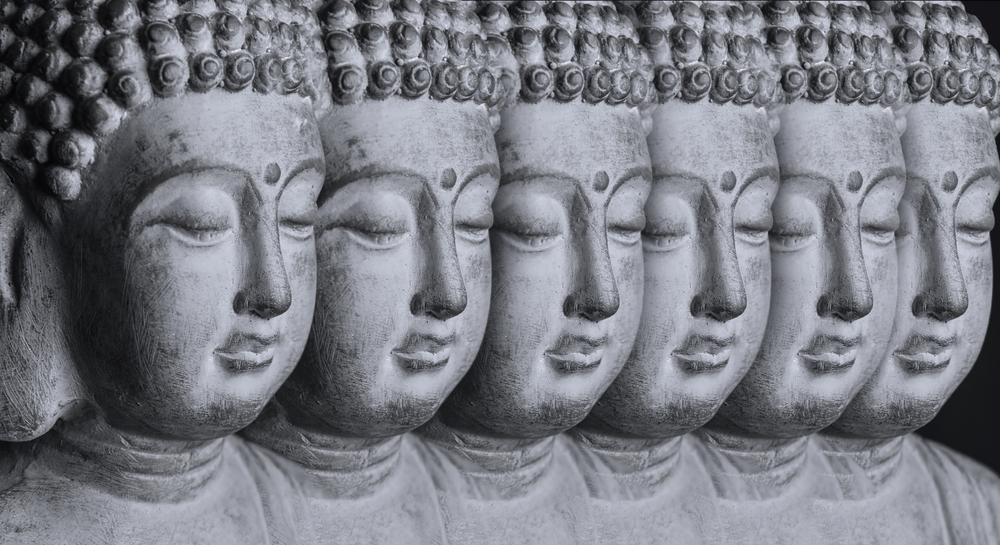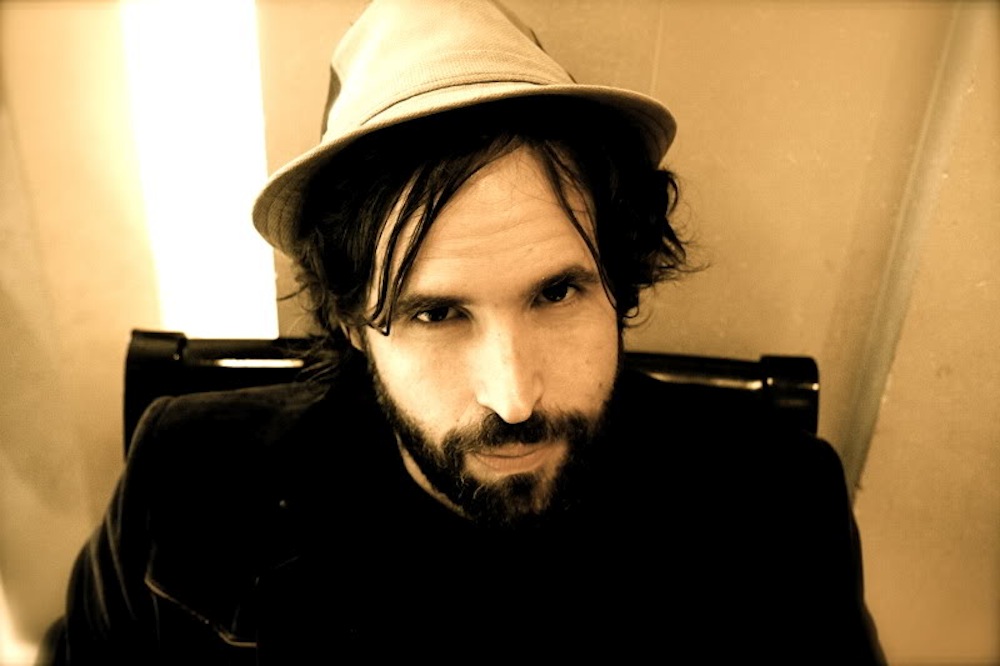Whatever a person frequently thinks and reflects on, that will become the inclination of their mind.—Buddha
Whatever we regularly think colors our experience—all day, every day. Once we start to watch these thoughts, we discover that 90% of them are reruns! Others are about problems: “I need to call John about the roof again. I hope he can finally fix it.” Some are about our preferences: “I like the way this person talks.” “I really hate this traffic.” Many are worry or self-evaluation: “Oops, I’m messing up again. How do I get through this?” “Wow, I pulled that off well. I hope it was noticed!”
Our life is shaped and determined by our thoughts. Usually we are only half conscious of the way thoughts direct our life; we are lost in thoughts as if they are reality. We take our own mental creations quite seriously, endorsing them without reservation.
Often our fears don’t turn out to be accurate predictions of anything. As Mark Twain put it, “My life has been filled with terrible misfortunes—most of which never happened!” When we become mindful of fearful thoughts, we see that fear is just a story accompanied by dramatic feelings. We don’t have to take the story as truth. As we see the productions of our mind, we discover radical freedom. The Tibetan lama Khyentse Rinpoche explains, “Mind creates both samsara and nirvana. Yet there is not much to it, it is just thoughts. Once we recognize that thoughts are empty, the mind will no longer have the power to deceive us.”
Yet however much we try, sometimes we’re caught in our repetitive thoughts, and knowing about their emptiness doesn’t help. We can obsess for months about a past relationship or about our fear of failure at work. These difficult patterns of thought can repeat and persist, coloring our consciousness so deeply that we can be tormented by them, unable to see without their distortion.
If we pay attention to the feelings underneath these repeated thoughts, there is often unacknowledged or unaccepted emotions, pain or difficulty. It might be a grief or loss that we have not fully acknowledged, or worry or fear, or longing or a thwarted creative impulse. When we let ourselves drop below the thoughts and sense what is asking for acceptance, our willingness to feel these emotions that have been driving the thoughts often allows them to quiet down.
Following this we need, quite deliberately, to create positive thoughts in order to replace these unskillful patterns of mind. The understanding of these as simply unskillful states means that we can do something about them, as opposed to saying we’re neurotic and there’s no hope.
Buddhists were actually the first cognitive-behavioral therapists. In its current Western form, cognitive-behavioral therapy originates from the work of such figures as Albert Ellis, founder of rational emotive therapy, and psychiatrist Aaron Beck. Modern cognitive therapy grew from behavioral therapy, which rejected the psychoanalytic focus on family history and the unconscious. Instead it looked at what was happening in the here and now. The behaviorists believed that when we change behaviors, all else follows. Adding the cognitive element—the contents of our ongoing inner dialogue—provided another powerful tool for change.
We can see how this works in a standard cognitive-behavioral approach to panic attacks or phobias. We may be taught to count how many times the thought “I’m afraid” arises and touch a wristband inscribed with the words “I am strong” to replace our anxious thoughts. Then we can choose to act out of the strength. Sometimes this behavioral approach is coupled with systematic desensitization.
If you are afraid of heights, you practice step by step, going to higher places until you can tolerate them. The same strategy is used to change depressive and fearful thoughts. In cognitive therapy, you see how unskillful behaviors and painful mind states originate from irrational thought patterns. You challenge these panicky, depressive thoughts, telling yourself not to believe them. Then you act positively and do what you are afraid of anyway.
Though there is considerable overlap between Eastern psychology and cognitive therapy, Buddhist training does more than offer purely rational replacement of inaccurate thought patterns. We could call the Buddhist approach “behaviorism with heart.” It enlists the power of a larger, benevolent intention. We begin by using mindfulness to identify the patterns of thought and the feelings under them that lead to our suffering. These include thoughts and feelings of unworthiness, jealousy and hatred, revenge, anxiety, clinging, and greed. Then out of compassion we change what is in our minds. We transform our thoughts as a loving protection of ourselves and of others.
We can hope for sudden transformation, but in most cases radically retraining our minds requires steady, patient effort. The power to transform our mental conditioning is now scientifically documented by modern neuroscience’s discovery of neuroplasticity, which shows how our brains can be retrained and reshaped at any age. This supports the profound hope and understanding built into Buddhist practice. Like its Western cognitive counterparts, Buddhist training teaches us to look at the thought distortions that create suffering. For example, we can notice when we generalize from one problem to our whole life. If we have a loss in business or a setback in our career, we may think, “I’m a loser. I’ll never succeed.”
In cognitive therapy we would recognize the deluded nature of such thought patterns as “false generalizations” and try to notice every time they arise. Immediately we might substitute a wise thought: “I have a good life and a loving family. My life has had many successes.”
The Buddhist perspective takes the process further. We can learn to see that distorted thoughts based on self-hatred, aggression, revenge, and greed are not in our genuine interest. We can actually see that these thoughts do not have our well-being in mind. We can learn to recognize their harmful potential and choose a different path. My teacher Ajahn Chah described this as recognizing bad mangoes. We’d call them bad apples. “When we choose a fruit to eat, do we pick up the good mangoes or the rotten ones? It is the same in the mind. Learn to know which are the rotten thoughts and immediately turn from them to fill your basket with ripe beautiful mind states instead.”
When we are depressed, frightened, or angry, cascades of unskillful thoughts will tempt us with their stories: “I can’t possibly get through this.” “It will always be this way.” “I’ll never have a good relationship.” These thoughts create a painfully limited and false sense of self. Yet through practice, we can feel the pain that these thoughts produce, release them, and substitute a wiser perspective. Ajahn Chah says, “Whatever the mind tells you, don’t fall for it. It’s only a deception. Whatever negative comments and views it offers, you can just say ‘That’s not my business,’ every time, and let it go.” You can say, “Thank you for trying to protect me. I’m OK for now.”
With the letting go of unhealthy thoughts, there arises a space, a calm, an opening to add healthy thoughts of love and self-respect. With all the dignity, courage and tenderness you possess, inwardly say from your heart phrases of lovingkindness such as: “May I be filled with compassion for myself and others.” “May I hold myself with care and respect.” “May I treasure my life.” “May I be filled with kindness.”
Sometimes you will feel their meaning. Sometimes they may feel more mechanical or rote. No matter. Just repeat them gently again and again. Plant these loving thoughts, water these seeds of well-being over and over until they take root in your heart and mind.
Excerpt adapted from The Wise Heart





